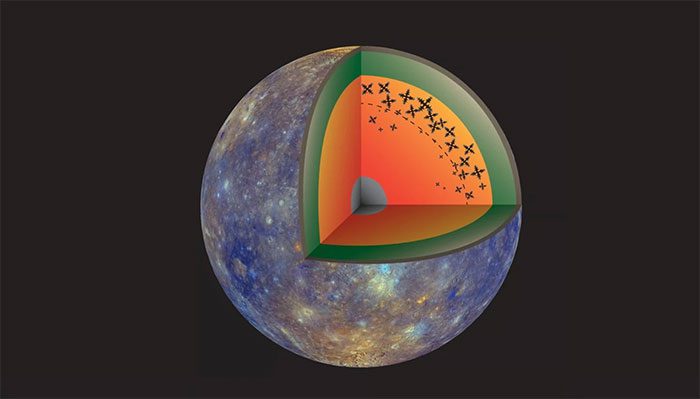This celestial body is larger than Mercury and has an astonishing magnetic field like a planet: Ganymede.
According to Science Alert, a new study has uncovered the answer to the mysterious magnetic field of Ganymede – the largest moon of Jupiter and the entire Solar System, surpassing even the sizes of the planet Mercury and the dwarf planet Pluto.

The hypothetical core of the “moon bigger than a planet” Ganymede – (Image: NASA).
The tidal effects from the massive Jupiter continuously influence Ganymede, keeping it warm and controlling its magnetic field.
However, the precise geological processes occurring within the core – which have the most significant impact on the magnetic field – are still not fully understood.
A team of authors from the University of Grenoble Alpes, University of Savoie Mont Blanc, CNRS, Gustave Eiffel University, and Aix-Marseille University (France) conducted an experimental study, presenting a viable core dynamics model for Ganymede.
This involves a massive core comprised of “iron snow”: Iron cools and crystallizes near the outer edge of the core, where it meets the mantle, before melting and falling into the planet’s center like snow, and then the cycle continues.
In other words, Ganymede’s core resembles snowballs that humans often use as decoration, but this “snow” is metallic and is continuously stirred by Jupiter.
The iron cycles of “floating up”, crystallizing, melting, and falling inward create a continuous movement within the core and provide the energy needed to generate the magnetic field.
Subsequent experiments by the team demonstrated this, but also indicated that this activity might be interrupted during certain intervals between “cycles”, resulting in a discrete but periodic process.
This causes the magnetic field of this celestial body to continuously shift, “dance”, strengthen, weaken, and change shape over time.
Ganymede is not the only place in the Solar System that may have “iron snow.” Scientists suspect that Earth’s moon and smaller planets like Mercury and Mars may also exhibit this phenomenon.


















































